Home Blogs Website How To Know If Your Website Is Hacked Or Not?
Posted By: Shriji Solutions
07 September, 2024

In today's digital landscape, websites are often targeted by hackers to steal data, deface pages, or cause other disruptions. Although no one wants to think that their site has been compromised, it is important to know how to detect a hack and act fast to minimize potential damage. In this article, we'll explore the signs that your website has been hacked, the steps to confirm, and what you can do to protect your site and data.
Why Do Websites Get Hacked?
Before considering how to identify a hack, it is important to understand why websites are targeted. Hackers can attack websites for many reasons, such as:
- Data Theft: Personal information, credit card details and other sensitive data can be valuable to cyber criminals.
- Spamming: Hackers can use your website to send spam emails or host malicious content.
- Distortion: Some hackers attack websites for entertainment or as a political statement, to leave a message or to vandalize a site.
- Malware Distribution: Compromised websites can be used to distribute malware to unsuspecting visitors.
- SEO Spam: Hackers can inject links to their own sites or products to manipulate search engine rankings.
Understanding the objectives can help you better secure your website against potential attacks.
Signs That Your Website May Be Hacked
1. Unexpected Downtime or Slowness:
One of the first signs of a hacked website may be unexpected downtime or an unusually slow website. If your website suddenly takes longer than usual to load, it could be due to increased server load due to a malicious script or an attack.
2. Changing the Appearance of Your Website:
If you see strange content, unfamiliar images, or altered text on your website that you did not authorize, this is a clear sign of defacement. Hackers often change the homepage or insert their own messages or pictures.
3. Security Warnings from Browsers:
Modern browsers like Google Chrome, Firefox, and Edge display warnings when malicious activity is detected on a website. If you see a "This site may be hacked" warning or similar, it indicates that your site may be compromised.
4. Unusual Pop-Ups or Redirects:
If your site starts displaying pop-ups, advertisements, or redirects to unknown or suspicious websites, it may indicate that hackers have inserted malicious code into your site.
5. Unexplained User Account Activity:
Check for any new, unauthorized user accounts or changes to existing accounts. Hackers often create backdoor accounts to maintain access to your website.
6. Unrecognized Files Or Code:
Inspect your website files regularly. Look for any unfamiliar files, scripts, or code changes. If you find files you didn't upload or code you didn't write, your website may have been hacked.
7. Spam Emails Sent From Your Domain:
If customers or contacts report receiving spam emails from your domain, it may indicate that hackers are using your website to send malicious or spam content.
8. Google Blacklisting or Search Engine Alert:
If your website is hacked, Google and other search engines may blacklist it or mark it with a "This site may harm your computer" warning. To see if your website has been flagged, you can check Google Search Console or use Google's Safe Browsing tools.
9. Website Host Notifications:
Your web host can send you alerts if it detects suspicious activity or vulnerabilities on your site. Pay close attention to any warnings or notifications from your hosting provider.
10. High Traffic from Unknown Sources:
An unusual increase in traffic, especially from unknown or foreign IP addresses, may indicate a DDoS attack or other malicious activity on your website.
How to Confirm If Your Website Has Been Hacked
Once you've identified the possible signs of a hack, it's important to confirm if your site has indeed been compromised. Here are the steps to be taken:
1. Run A Security Scan:
Use website security scanners like Sitecheck Sucuri, Wordfence, Malcare, come on Virustotal to check for malicious code, malware and other vulnerabilities. These tools will scan your website for known threats and provide a report on potential issues.
2. Check For Unauthorized Changes:
Review your website's content management system (CMS), database, and file system for unauthorized changes or unfamiliar files. Compare the current version of your website to a clean backup version to identify changes.
3. Monitor Server Logs:
Server logs provide a detailed history of all activity on your website. Check these logs for unusual or unauthorized access attempts, file changes, or user actions. Look for any failed login attempts or requests from unfamiliar IP addresses.
4. Check User Accounts:
Review the user accounts on your website to ensure that no unauthorized users have been added or any changes have been made to existing accounts. Pay special attention to accounts with administrative privileges.
5. Check For Malicious Code Injection:
Inspect your website's codebase for signs of code injection, such as <iframe>, <script>, come on <embed> Tags you didn't add. These tags are often used by hackers to insert malicious code.
6. Look For Suspicious Scheduled Tasks Or CRON Jobs:
Hackers sometimes add malicious scripts to scheduled tasks or CRON jobs to execute automatically. Review these settings on your server or CMS to ensure that no unauthorized functions are installed.
7. Review Third-Party Integrations:
Plugins, extensions, and third-party integrations can be entry points for hackers. Review all third-party tools and integrations to ensure they are up to date and free of vulnerabilities.
8. Contact Your Hosting Provider:
If you're unsure about the signals you're seeing or need further confirmation, contact your hosting provider's support team. They may have additional tools to help you identify security breaches.
Steps To Take If Your Website Is Hacked
1. Quarantine The Website:
Take your website offline immediately to prevent further damage. You can put it into maintenance mode or turn it off temporarily.
2. Reset All Passwords:
Reset all passwords associated with your website, including administrator accounts, FTP accounts, databases, and email accounts. Use strong, unique passwords for each account.
3. Remove Malicious Code:
After identifying infected files and malicious code, remove them carefully. Make sure any backdoor entry points are closed to prevent re-entry.
4. Restore From A Clean Backup:
If you have a recent, clean backup of your website, consider restoring it to a point before it was hacked. Make sure the backup is free of vulnerabilities or infections.
5. Update Software, Plugins And Themes:
Make sure your website's CMS, plugins, themes, and other components are updated to the latest versions. Outdated software is often a common entry point for hackers.
6. Implement Security Measures:
Strengthen your website's security by installing a reliable security plugin, setting up a firewall, enabling two-factor authentication, and regularly scanning your site for malware.
7. Check Google Penalties:
If your site was flagged or blacklisted by Google, submit a reconsideration request after clearing the hack. This will help restore your website's visibility in search engine results.
8. Notify Your Users:
If user data has been compromised, notify your users of the breach and advise them to take necessary precautions, such as changing their passwords.
How to Prevent Future Hacks
1. Keep Software Updated:
Regularly update your website's CMS, plugins, themes, and server software to ensure they are free from vulnerabilities.
2. Enforce Strong Password Policies:
Use strong, unique passwords for all accounts associated with your website. Encourage users to do so and enable two-factor authentication where possible.
3. Regular Backup:
Set up automatic daily or weekly backups for your website and store them securely. This allows easy restoration in the event of a hack.
4. Use Secure Hosting:
Choose a reputable hosting provider that offers strong security features like DDoS protection, malware scanning, and regular backups.
5. Limit User Privileges:
Provide administrative access only to users who need it. Restrict user privileges to minimize potential vulnerabilities.
6. Regular Security Audits:
Perform regular security audits to identify potential vulnerabilities and take corrective action. Hire a professional security firm if necessary.
7. Install A Web Application Firewall (WAF):
WAF helps filter out malicious traffic and protects your website from common threats like SQL injection, cross-site scripting (XSS), and DDoS attacks.
Conclusion
Detecting and responding to a hacked website is critical to protecting your online presence, reputation, and user data. By regularly monitoring for signs of hacking, performing thorough security checks, and implementing strong preventative measures, you can significantly reduce the risk of a successful attack. Remember, in the digital world, vigilance and proactive security practices are your best defense against hackers.
If you need professional assistance securing your website or recovering from a hack, consider contacting Shriji Solutions, who specialize in website security and maintenance. Stay safe and secure online!

